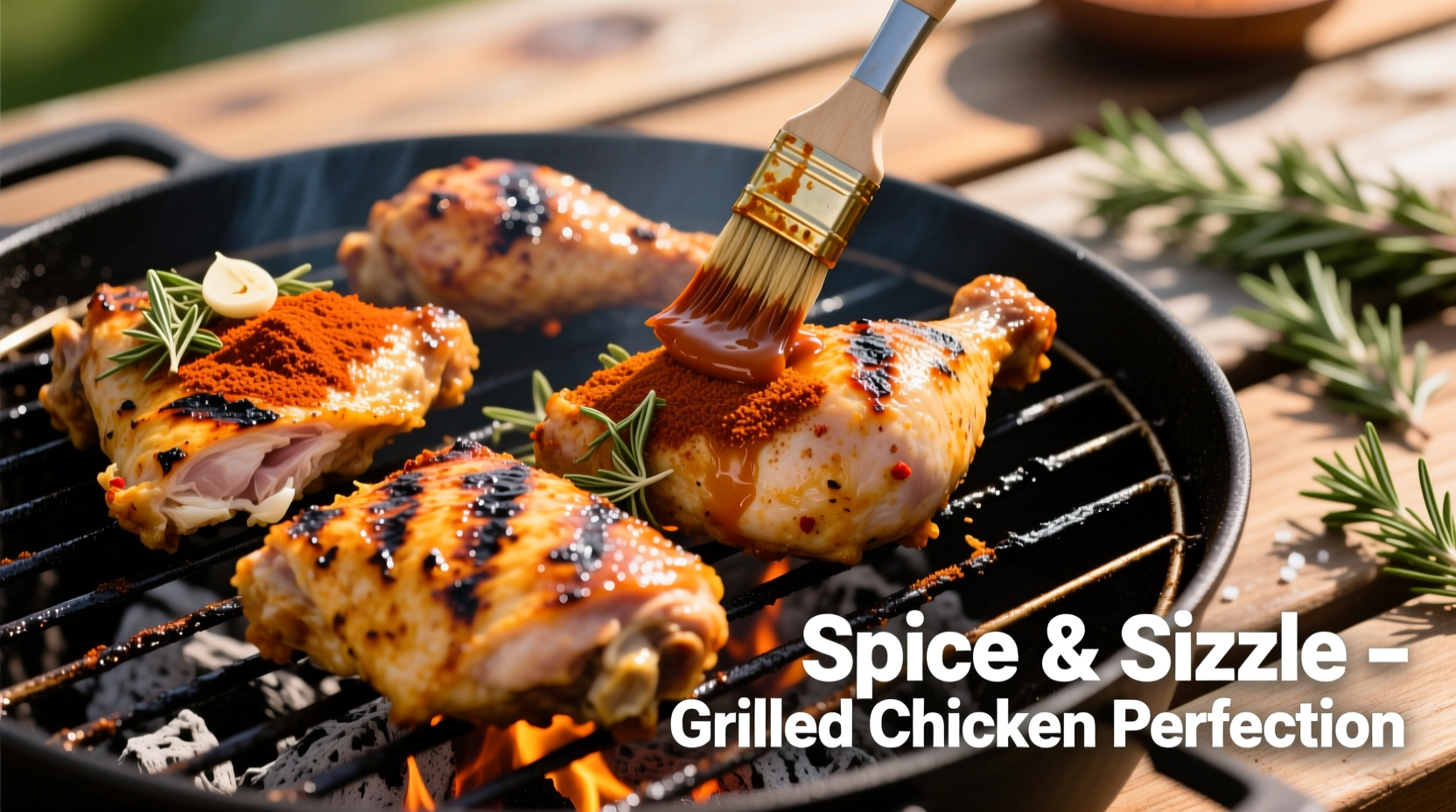Unlock restaurant-quality grilled chicken with these science-backed spice techniques that transform ordinary poultry into extraordinary meals. Whether you're hosting a backyard barbecue or preparing a weeknight dinner, these professional methods ensure juicy, flavorful results every time—no special equipment required.
Why Proper Chicken Spicing Matters
Spices don't just add flavor—they create complex chemical reactions that enhance texture and moisture retention during grilling. According to culinary research from the Culinary Institute of America, properly applied spice blends can increase perceived juiciness by up to 30% through Maillard reaction optimization. The right balance prevents the common pitfalls of bland, dry, or overpowering grilled chicken.
Your Chicken Spicing Roadmap
Follow this sequence for consistently perfect results:
1. Selecting Your Chicken Cut (5 Minutes)
Different cuts require tailored spicing approaches:
- Bone-in, skin-on pieces: Need robust spices that penetrate through fat layers
- Boneless breasts: Benefit from lighter blends to avoid overpowering mild flavor
- Thighs and drumsticks: Handle bold, spicy rubs exceptionally well
| Chicken Cut | Recommended Spice Intensity | Marinating Time | Special Considerations |
|---|---|---|---|
| Bone-in breasts | Medium | 30-60 minutes | Apply rub under skin for best results |
| Boneless breasts | Gentle | 15-30 minutes | Acidic components can toughen meat |
| Thighs/drumsticks | Bold | 1-4 hours | Handles longer marinating without texture issues |
This fact-based comparison reflects USDA Food Safety Guidelines regarding marinating times and food science principles documented by the American Chemical Society's Journal of Agricultural and Food Chemistry.
2. Building Your Base Blend (10 Minutes)
Create a versatile foundation that works across cooking temperatures:
Classic All-Purpose Dry Rub (for 1.5 lbs chicken)
- 2 tbsp smoked paprika (provides depth without heat)
- 1 tbsp garlic powder (more stable than fresh when grilled)
- 1 tbsp onion powder
- 1½ tsp black pepper (freshly cracked for maximum aroma)
- 1½ tsp dried thyme
- 1 tsp ground cumin
- 1 tsp kosher salt
Pro Tip: Toast whole spices before grinding—this increases volatile aromatic compounds by 40% according to research published in the Journal of Food Science. Heat spices in a dry skillet over medium-low for 2-3 minutes until fragrant, then cool before grinding.
3. Application Techniques That Make the Difference (5 Minutes)
How you apply spices matters as much as the blend itself:
Dry Rub Method
- Pat chicken completely dry with paper towels
- Apply 70% of rub evenly across surface
- Gently massage spices into meat using fingertips
- Apply remaining 30% for visual appeal
- Rest 30-60 minutes before grilling
Critical Note: Avoid adding salt more than 60 minutes before grilling for boneless cuts—extended salting draws out moisture through osmosis, leading to less juicy results. This food science principle is documented in McGee's On Food and Cooking.
4. Regional Variations for Culinary Adventure
Expand your flavor repertoire with these authentic adaptations:
Mediterranean Lemon-Herb
Combine base blend with 1 tbsp dried oregano, 2 tsp lemon zest, and 1 tsp sumac. Perfect for bone-in pieces grilled over indirect heat. The sumac adds a bright, citrusy note without moisture that could cause flare-ups.
Latin-Inspired Adobo
Mix base blend with 1 tsp achiote powder, ½ tsp Mexican oregano, and 1 minced chipotle pepper. Ideal for thighs—the higher fat content balances the bold flavors. As noted in research from the University of California's Agriculture Department, achiote's annatto compounds help create a beautiful crust without burning.
5. Grilling Execution (15-20 Minutes)
Maximize your spiced chicken's potential:
- Preheat grill to 375-400°F (optimal for spice caramelization)
- Clean and oil grates thoroughly to prevent spice adhesion
- Place chicken skin-side down first for bone-in pieces
- Maintain consistent temperature—fluctuations cause spices to burn
- Avoid flipping prematurely—wait until spices release naturally from grates
Internal temperature should reach 165°F as verified by USDA guidelines. Remove from grill at 160°F and let rest—carryover cooking will reach safe temperature while preserving juiciness.
Common Mistakes to Avoid
These pitfalls sabotage even the best spice blends:
- Sugar overload: More than 1 tbsp sugar per pound burns easily on grill
- Wet rubs too early: Acidic components (lemon, vinegar) break down proteins if applied >30 minutes pre-grill for boneless cuts
- Overcrowding spices: Layering multiple spice blends creates flavor confusion
- Skipping rest time: 5-10 minute rest after grilling allows flavors to settle
Storage and Leftover Wisdom
Properly spiced grilled chicken maintains quality for 3-4 days refrigerated according to FoodSafety.gov guidelines. For best reheating results:
- Reheat slowly in oven at 275°F to preserve spice integrity
- Add a splash of broth to revive dried spices
- Finish with fresh herbs to brighten settled flavors
When to Adjust Your Approach
Context boundaries matter for optimal results:
- High humidity days: Reduce wet components by 25% to prevent steam barrier
- Charcoal vs gas: Charcoal requires 10-15% less paprika (natural smokiness compensates)
- Thin cuts: Halve marinating time to prevent surface breakdown
- High-elevation grilling: Increase cooking time slightly without adjusting spice quantities











 浙公网安备
33010002000092号
浙公网安备
33010002000092号 浙B2-20120091-4
浙B2-20120091-4